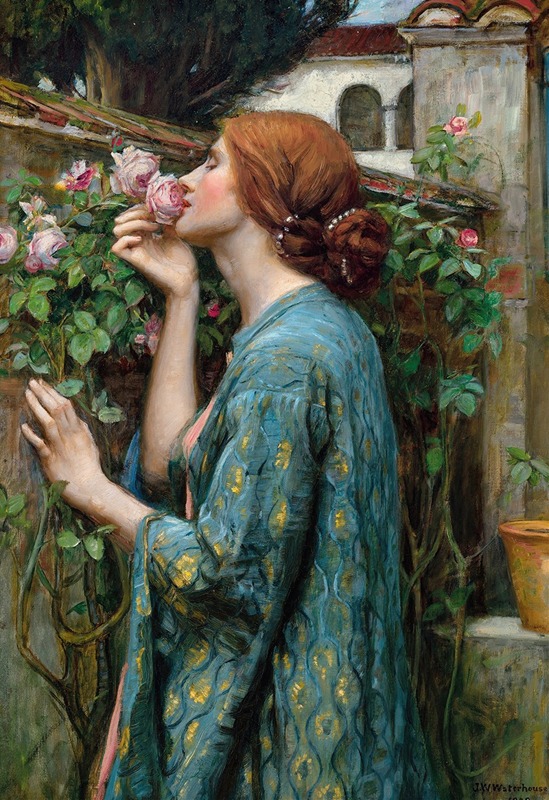
The Soul of the Rose
A hand-painted replica of John William Waterhouse’s masterpiece The Soul of the Rose, meticulously crafted by professional artists to capture the true essence of the original. Each piece is created with museum-quality canvas and rare mineral pigments, carefully painted by experienced artists with delicate brushstrokes and rich, layered colors to perfectly recreate the texture of the original artwork. Unlike machine-printed reproductions, this hand-painted version brings the painting to life, infused with the artist’s emotions and skill in every stroke. Whether for personal collection or home decoration, it instantly elevates the artistic atmosphere of any space.
"The Soul of the Rose" is a painting by the British artist John William Waterhouse, completed in 1908. Waterhouse was a prominent figure in the Pre-Raphaelite movement, which sought to return to the detail, intense colors, and complex compositions of pre-Renaissance art. This particular painting is one of Waterhouse's later works and exemplifies his fascination with themes of beauty, romance, and mythology.
The painting depicts a solitary woman in a garden, deeply inhaling the scent of a rose. She is dressed in a richly colored gown, typical of Waterhouse's attention to detail and his interest in historical and mythological subjects. The woman's pose is one of introspection and contemplation, as she leans towards the rose, seemingly lost in its fragrance. Her expression is serene, suggesting a moment of personal reflection or emotional connection with nature.
Waterhouse's use of color and light in "The Soul of the Rose" is particularly noteworthy. The warm tones of the woman's dress contrast with the cooler hues of the garden, creating a harmonious balance that draws the viewer's eye to the central figure. The detailed rendering of the roses and foliage showcases Waterhouse's skill in capturing the delicate beauty of nature, a hallmark of the Pre-Raphaelite style.
The title of the painting, "The Soul of the Rose," suggests a deeper symbolic meaning, possibly alluding to the idea of the rose as a symbol of love, beauty, and the ephemeral nature of life. This theme is consistent with Waterhouse's broader body of work, which often explores the intersection of human emotion and the natural world.
Waterhouse was known for his ability to convey complex emotions through his art, and "The Soul of the Rose" is no exception. The painting invites viewers to consider the relationship between the woman and the rose, and by extension, the connection between humanity and nature. This introspective quality is a defining characteristic of Waterhouse's work and contributes to the enduring appeal of his paintings.
"The Soul of the Rose" is housed in a private collection, which means it is not on permanent public display. However, it remains one of Waterhouse's most celebrated works and is frequently reproduced in art books and exhibitions dedicated to the Pre-Raphaelite movement. The painting's timeless beauty and emotional depth continue to captivate audiences, ensuring its place as a significant work in the history of British art.
John William Waterhouse's legacy as a master of the Pre-Raphaelite style is well established, and "The Soul of the Rose" stands as a testament to his artistic vision and technical skill. Through this painting, Waterhouse invites viewers to pause and reflect on the beauty of the natural world and the profound emotions it can evoke.


















